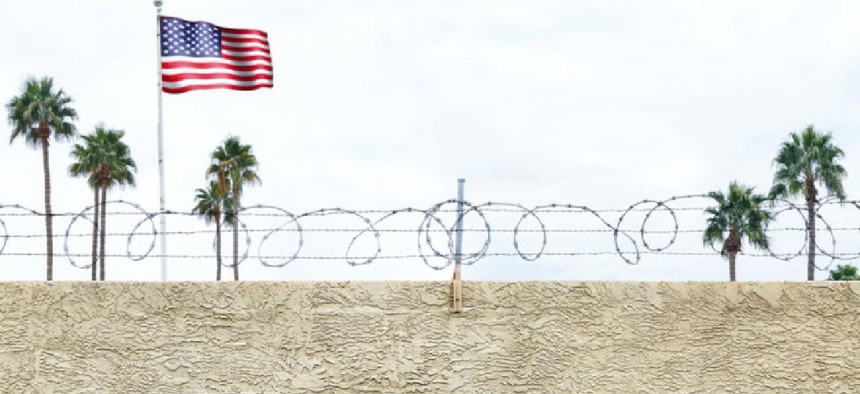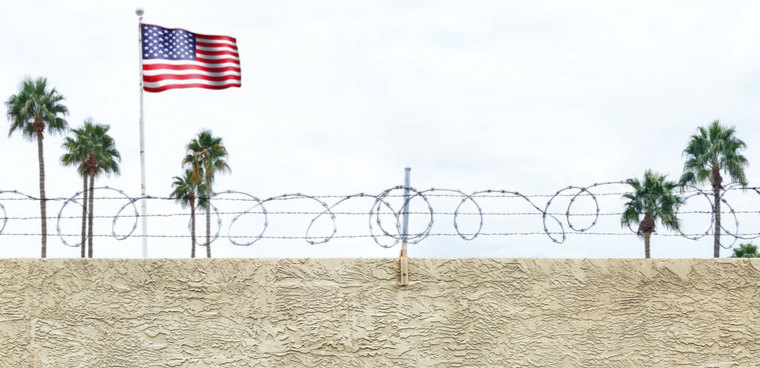Data gap in immigration systems could keep families separated

If the just-suspended border separation policy is ever resumed, officials may have to confront the fact that disparate immigration systems are not equipped to handle the reunification of separated families.

President Donald Trump signed an executive order June 20 to reverse some aspects of a hard line immigration detention policy that resulted in splitting up families at the border, with parents headed to jail and children put in the custody of child welfare authorities.
The Department of Homeland Security will begin "detaining alien families together where appropriate and consistent with law and available resources," according to the executive order, which also directs the Defense Department to provide facilities for the purpose.
The move is a response to the global outcry against the family separation policy put in place by Trump and Attorney General Jeff Sessions, which required that anyone caught attempting to cross the U.S.-Mexico border without documents be taken into custody.
The executive order also seeks relief from the constraints of a federal court decision that expressly bans the indefinite judicial detention of children awaiting deportation hearings. If the decision in Flores v. Sessions is not modified, the administration faces a return to the separation policy or some other border enforcement strategy.
If the separation policy is ever resumed, officials may have to confront the fact that disparate immigration systems are not equipped to handle the reunification of separated families.
Children separated from their parents are assigned to the custody of the Office of Refugee Resettlement (ORR), which falls under the Administration of Children and Families at the Department of Health and Human Services. During the unaccompanied-minors crisis during the Obama administration, HHS fielded five new systems to track data on individuals seeking refugee status.
Under the Trump administration's "zero tolerance" policy, children who have entered the U.S. with parents that are taken into custody by Immigration and Customs Enforcement or other agencies are classified as unaccompanied minors.
This administrative sleight of hand is what leads to a potential data gap that could prevent some children from ever being reunited with their parents, explained Frank Baitman, the former CIO of HHS.
"I have no doubt that the system is fully capable of tracking children -- that is in part, what it was designed for," Baitman told FCW in an email. "However, it was never designed to simultaneously track parents and children, and keep them matched to one another."
The purpose of the ORR records is to track children from their transfer from one of the Homeland Security agencies, either ICE or Customs and Border Protection, to the point where they are placed in with an outside caretaker, often a relative.
HHS did not return emailed requests for comment.
Former ICE Director John Sandweg told NBC News that permanent separations are possible, in part because parents can be deported relatively quickly while cases involving minors can take years to adjudicate.
"You could be creating thousands of immigrant orphans in the U.S. that one day could become eligible for citizenship when they are adopted," Sandweg explained.
ORR records can be shared with advocates for minors in the system, contractors working on their care, DHS agencies and relatives. As a practical matter, parents who are in custody may find it difficult to keep track of their children. ORR has a toll-free 800-number to get information from a call center, but parents are required to get permission from ICE to make calls and must keep track of an eight- or nine-digit alien number.
"The disconnect between DHS and HHS systems is likely due to the fact that the Trump administration policy imposed a new requirement," Baitman said. "It clearly wasn't well thought out."
Virginia's two Democratic Senators, Mark Warner and Tim Kaine, are also concerned that the administration embarked on family separation without a mechanism to reunite parents and children.
"Are families being reunited? If so, how and when," the lawmakers asked in a June 19 letter to the heads of DHS and HHS. "What is the specific process which parents follow to allow for reunification with their separated children? What data does DHS have to indicate the percentage of parents who are indeed reunified with their children in a timely manner?"



